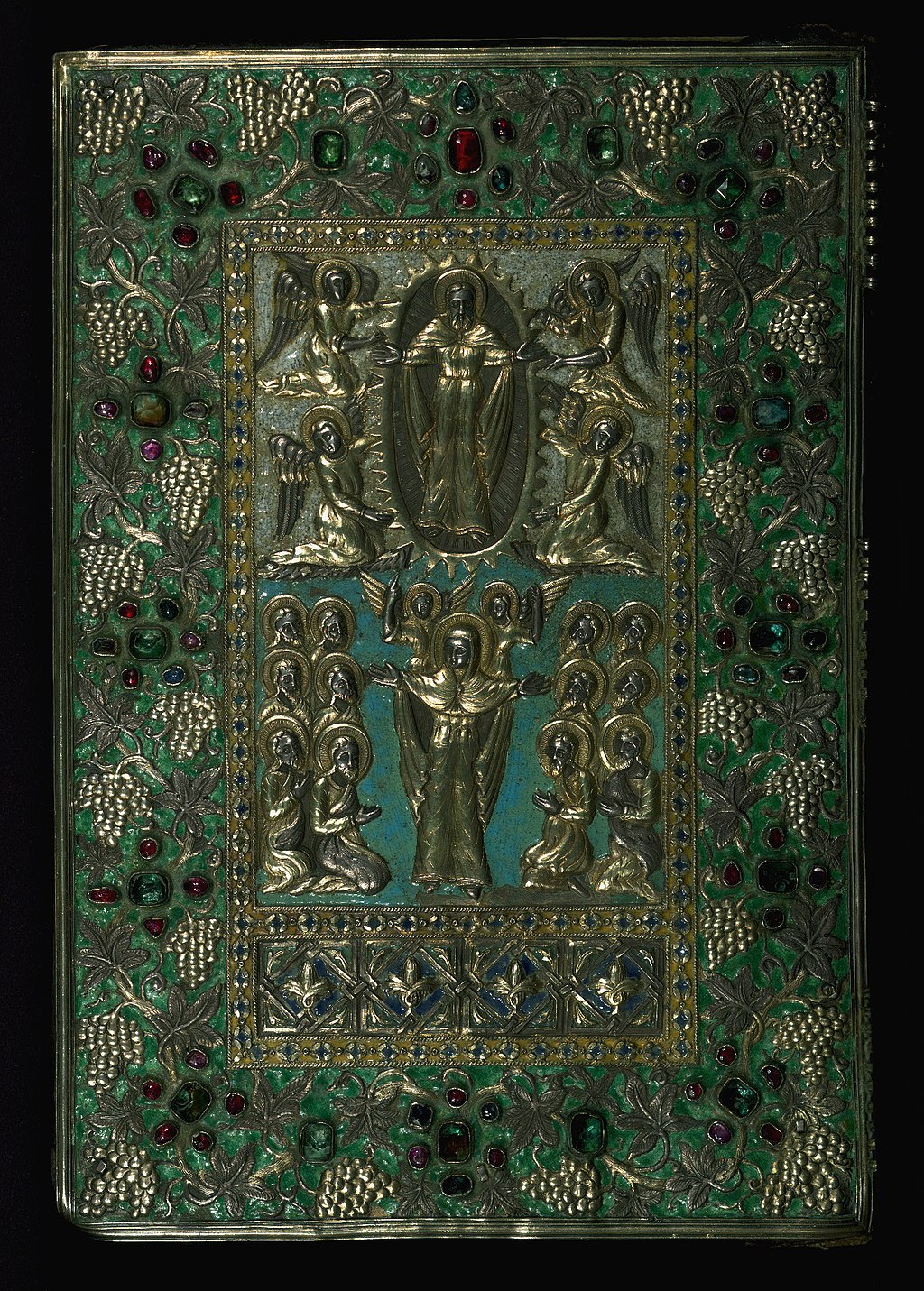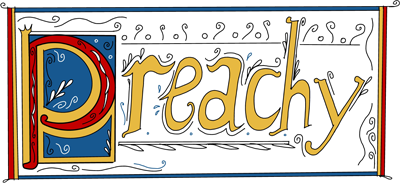
Building a personal canon of holy texts
 I grew up thinking of a canon as a definitive collection of texts that had long ago been declared sacred. Resolute and unyielding, a canon was not just The Good Word, but The Last Word. In Sunday School, our canon was the Bible. In high school, it was literature written by dead white men: Hemingway, Faulkner, Dickens, Fitzgerald, Shakespeare — writers recognizable by their last names alone. In college, I read texts outside the traditional western canon, but my assigned reading was still plucked from the syllabus that defined a typical liberal arts education. Professors told me: “This is important,” and that was that.
I grew up thinking of a canon as a definitive collection of texts that had long ago been declared sacred. Resolute and unyielding, a canon was not just The Good Word, but The Last Word. In Sunday School, our canon was the Bible. In high school, it was literature written by dead white men: Hemingway, Faulkner, Dickens, Fitzgerald, Shakespeare — writers recognizable by their last names alone. In college, I read texts outside the traditional western canon, but my assigned reading was still plucked from the syllabus that defined a typical liberal arts education. Professors told me: “This is important,” and that was that.
It did not occur to me that I had long been building my own canon. Throughout my life, I’ve been collecting literature, poetry, and essays that shape my worldview. This personal canon is not carved into stone, but rather it’s fluid, evolving. For myself, I declare these texts important, and so, for me, they are.
Mortality was what first drove me to find comfort in print. I used to lay awake at night on my bed, paralyzed by a fear of death. Sometimes, when the fear became all-consuming, I would pad downstairs over our blue carpet to where my mother sat at our kitchen table. .My mother didn’t have the answers I wanted (does any mother?), so we resorted to a more definitive record: the local paper’s obituary section.
There, my mother could help. We’d go through that day’s newspaper together, where I was able to confirm that the people dying were indeed old. In yellow kitchen light, death recorded on paper was more distant and less fearsome. It was certain, yet mitigated when documented in such a matter-of-fact way: dates and numbers and “survived by” and “flowers can be sent to.” Deaths stacked into neat columns in The Amherst Bulletin. These written words were sacred—my first bible.
Fiction helped too, allowing me to safely explore death and darkness in a cordoned-off way. I became obsessed with Tuck Everlasting, the story of a family that unknowingly drinks water from a magical spring that grants them eternal life and a woman who falls in love with one of the immortal Tucks and must decide whether or not to live forever. I wanted to stare death in the face and know what was on the other side, and at the same time, I was terrified of finding out that there was only nothing. The Tuck family allowed me to peer over this edge and speculate, safely. Their parable did not answer my unanswerable questions, but it let me pick them apart; I deemed the story Holy and quietly added it to my bookshelf.
In retrospect, it wasn’t so much death that terrified me, but interminable darkness. Nothingness. Nonexistence. I wanted assurance that death was not obliterating, that it was more than empty and absolute. Again, I sought answers in words and found solace in Mary Oliver’s poetry. She wrote about the familiar, but she peeled back a willow curtain or got beneath a surface ripple to wonder what we couldn’t see or understand. In “White Owl Flies Into and Out of the Field,” Oliver observes a great winged creature swoop down and snatch its prey from a blinding, snowy field and writes:
so I thought: maybe death isn't darkness, after all, but so much light wrapping itself around us — as soft as feathers — that we are instantly weary of looking, and looking, and shut our eyes, not without amazement, and let ourselves be carried, as through the translucence of mica, to the river that is without the least dapple or shadow, that is nothing but light — scalding, aortal light — in which we are washed and washed out of our bones.
This was revelatory for me. Oliver bathed all that was dark and shadowed in light, rinsing it until it was only bright and brilliant and everywhere. I did not need to run from light like I needed to run from darkness. I held Oliver’s lines in my heart. Her light filled me up.
By high school, I had begun curating my library of Holy Texts, seeking words that filled me with a similar kind of light and feeling of connection. I tore through A Prayer For Owen Meany, John Irving’s tale of prophecy and coming of age, and, surprisingly, a favorite book of both my atheist father and Christian mother. I read it the summer after my first year of college when I came home to my numbingly boring Indiana town. I felt like I had nothing to say to my parents then, but this book was a way to connect with both of them.
Later in college, I turned to personal essays and memoir, devouring The Opposite of Loneliness, an anthology of writing by Marina Keegan, a young author who died in a car accident days after graduating from the same college I attended. I cradled myself in the pages of her work and observed the uncanny resonances between her life and my own: our shared loves of food and writing and being young, the fact that we both drove old Toyota Camrys and held the same wonder for our storied college campus.
I read Keegan’s work and saw vibrant petals curled, coiled, with potential that would never open toward the sun. I felt cheated by the universe for it, and then also by my very first Holy Text, the Obituaries, which had promised full life and peaceful death only after many decades.
By my late adolescence and early 20s, I had experienced my own losses—suicide and heartbreak, hurt and not-understanding. I sought insight from the words of people in their own storms of grief. Just after turning 24, I stumbled into Cheryl Strayed’s Tiny Beautiful Things, a collection of letters people wrote to Strayed for her advice column “Dear Sugar” and her responses under that pen name. The book brims with human suffering in many forms, and while I clung to Sugar’s words with religious ferocity, I was also stricken by her advice: that pain subsides, that the intensity of emotion and experience would wane and change. That I didn’t understand myself in grief. That I didn’t understand myself.
By the time I found Audre Lord, I had collected my own small library of Holy Texts: a canon of words that stirred my spirit in ways I never experienced through texts traditionally upheld as Holy. Lorde’s work gave me words to name why my little library had become so sacred.
In “Poetry is not a luxury,” Lorde writes about poetry “as the revelation or distillation of experience,” and it is through this lyrical emotion “that we give name to those ideas which are—until the poem—nameless and formless, about to be birthed, but already felt.” Words as poetry, poetry as stories shine light into the parts of myself I least understand, the parts I fear. The childhood terror that had gripped me was not a fear of death, or even darkness, but of not knowing. I was—and still am—afraid of not knowing myself and, also, of knowing myself completely. And yet my Holy Texts have ripped me open and shown me my pulsing grief, veiny resentments, muscles of hope. They have exposed my spirit, which I have been too timid to understand, to scalding, aortal light.
Kate Raphael is a writer based in Boston, Massachusetts. Her work has appeared in Catapult Magazine, LeapsMag, and The Victory Press. You can find her on Twitter @kateraphael1.
